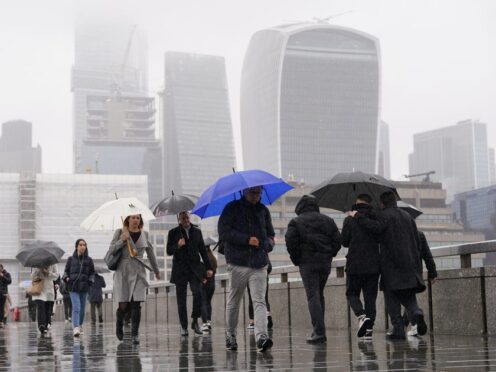Did you see the absurd claims going around social media like wildfire in our area last week?
Not the one about pupils at a local school “identifying as cats” and having litter trays put down for them in the toilets.
I mean the one about how we were irresponsibly playing into the hands of right-wing culture warriors by even acknowledging in our pages that it was being widely discussed.
“It’s pretty obvious that your goal with the headline was to stoke the ‘wokeness gone mad’ culture war” as one critic had it on Twitter.
Both claims do have something in common: neither stands up to even the flimsiest scrutiny.
There are no “cat kids” getting special treatment at Banff Academy any more than there are in Wisconsin, Michigan or any number of other places where this is supposed to have happened.
Every one of these stories, when they have been looked into by journalists and other professional fact checkers, has proved to be utterly false and the work of agitators with an agenda against certain minorities in society.
Spread of similar hoaxes about pupils identifying as cats
And we made sure our readers knew that by investigating for ourselves and reporting that neither we – nor those responsible for the schools in our area – could find any evidence to back the myths.
We provided some of the background too about the spread of similar hoaxes over recent years.
Do I understand people having concerns about “the media” hitching a ride on a wave of uninformed speculation in order to boost its own interests?
Yes I do. Sadly, there are publications that happily do so – lazily regurgitating the rumours in a titillatingly “could it be true?!” manner to drive traffic to their sites.
That has never been and will never be the P&J way.
ICYMI: A spokesperson said “We are aware of false rumours circulating online suggesting that Banff Academy has pupils identifying as cats requesting litter trays in the Academy’s toilets."https://t.co/4NI2vUayfi
— The Press & Journal (@pressjournal) January 27, 2023
But would we not be abdicating our responsibility as fact checkers just as much if we decided instead to stick our fingers in our ears and pretend communities were not awash with speculation?
It is the sort of discussion we have in the newsroom whenever we have a decision to make about how to cover a sensitive matter.
In this case we debated the pros and cons at length before agreeing that it was very much in the public interest that we should find out – and publish – the truth.
It was not chosen as the lead story on the front page of the paper though. And we decided to omit one part of the suppose “evidence” that was circulating locally, on the grounds it was entirely irrelevant and could cause harm.
Hoaxes discrecited thanks to work of journalists and fact-checkers
(The idea that journalists neither care about nor weigh up the justification and the potential consequences of what we do is another for the list of popular but baseless online myths by the way. We have this sort of conversation, putting ourselves under scrutiny, on an almost daily basis).
Some of those who were critical of us thought the rumours were so “obviously” untrue there was no need for the Press and Journal to get involved at all.
“The point is that by giving ridiculous stories credence you make them legitimate,” one told us.
“The cat litter box hoax has its own Wikipedia page, so it’s well known that it’s false, so why report it?”
They felt we were playing into the hands of those who invent, promote and exploit such fake news to push a political agenda, most often at the expense of a persecuted minority.
If the truth was “obvious” however, these stories would not get this traction in the first place. But they do, in large part because social media provides such fertile ground for lies to thrive in.
One US politician had to apologise after so falling for the “litter tray” and other school-based hoaxes that he used it in a speech.
Nebraska lawmaker apologizes for repeating false claim of litter boxes in schools https://t.co/jWTxHfr0Xn
— The Guardian (@guardian) March 29, 2022
The question those who damn us for helping perpetuate “well known” myths have to answer is why it is “well known” they are untrue.
Largely due to the work of journalists and other professional fact-checkers doing exactly the sort of work we did here.











Conversation